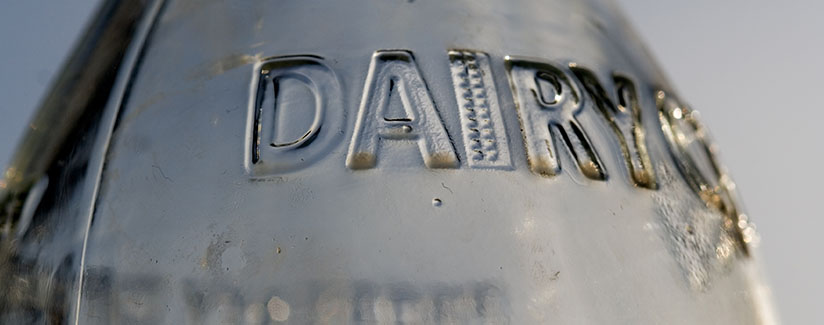
Are Hormones in Milk Causing Early Puberty in Girls?
We’ve heard literally dozens of women discuss their concern with hormones in milk causing early puberty. In focus groups near Chicago and New York City, when we asked moms what concerns they have about today’s food, the topic of early puberty due to “hormones in milk” came up several times. The women expressed that they know girls who have started menstruation earlier than they thought was normal. News articles including The New York Times and The Huffington Post have discussed it. Foodie moms,farm moms and nannies are blogging about it.
Clearly, this is a scary scenario for parents – certainly one for which we wanted to help find some credible information. To get the facts, we enlisted the help of Dr. Ann Macrina, research/teaching associate, and Dr. Terry Etherton, animal nutrition professor, both of Pennsylvania State University.
There seems to be growing concern about the association between hormones in dairy products and early puberty in girls. Are hormones in milk causing early puberty? What are your thoughts on this concern?
Dr. Macrina:
The age at which puberty begins in girls has been decreasing since the mid-1800s. It is odd to blame it on dairy products since dairy consumption has actually decreased during the same timeframe. Several things have been cited as causing early puberty in girls:
– Girls are maturing more quickly because they have better nutrition.
– Many believe girls must achieve a certain body mass for the onset of puberty to occur. The obesity rate is increasing in this country at a rapid rate and girls are reaching this point much sooner.
– Ethnicity might play a role. African-American girls and girls of Hispanic heritage tend to reach puberty sooner than Caucasian girls.There are many contributing factors to be considered but I don’t think dairy consumption is one of them.
Dr. Etherton:
There are zillions of protein hormones in both plant and animal foods. They are digested in the stomach, which kills their ability to have any biological activity. There is just no way to come to a science-based conclusion that hormones in food or dairy products cause early puberty.
So what is causing early maturity in girls? Based on what Dr. Macrina indicated, it could be any of several factors – better nourishment, higher body weight and some even suggest exposure to chemicals. Here are a couple other sources citing possible reasons for early maturity:
- According to WebMD, “puberty starts on average in girls between ages 8-13 and in boys between ages 9-14.” Early puberty is when this normal process starts early and continues to progress through growth spurts and bone maturation.
- This study examined the link between chemicals in plastics and the potential implications on maturity in mice. The study concluded that exposing female mouse fetuses to the chemicals at a quantity similar to that which humans contact normally, caused early puberty.
Another question we heard come up wasn’t only specific to “normal” hormones – but synthetic ones. You know – the ones that equate to an extra label on your gallon of milk and a subsequent disclaimer label stating, “No significant difference has been shown between milk derived from rbST-treated and non-rbST-treated cows.”
We see terms like rBST associated with milk and it can be confusing, especially when retailers announce they won’t sell milk from cows treated with it. Please explain for us – what is rBST and why is it used?
Dr. Etherton:
bST is a protein hormone that is naturally-occurring in cattle. It is also naturally in milk from cows. The “r” means it’s been produced by recombinant (synthetic) technology. On farms, cows are treated with rbST to increase the amount of milk they produce. On a well-managed farm, cows treated with rbST will see a 10-to-15 percent increase in milk production.
It is important to understand that milk from cows already contains bST and treating cows with the recombinant version does nothing to increase the hormone levels in the milk. There is no difference between dairy products from cows treated with rbST and other dairy products.
The U.S. Food and Drug Administration stands by the safety of rbST. In 1993, it was confirmed that milk from cows treated with rbST was safe for human consumption. In fact, the disclaimer language must be included on any such labeling nationwide because of an FDA ruling that says you can’t insinuate there’s anything wrong with a product like rbST.
Health Canada made the decision to not approve rbST for sale in Canada, not over concerns for food safety, but over concerns with the impact of the drug on cow health and welfare. They based their decision on research that showed increased levels of health and welfare complications like lameness and mastitis in dairy cows.
With all the available information, especially online, what are some good sources to trust when it comes to information on the effects of hormones in food animals?
Dr. Etherton:
When consumers do a Google search they find many authentic-looking websites that unfortunately contain a lot of misinformation. That creates challenges for people wanting to sort fact from fiction. I started a blog four years ago that addresses issues like food safety and the importance of using new technology so that we will be able to feed a rapidly growing global population.
Dr. Macrina:
The Academy of Nutrition and Dietetics has a very nice website for general nutrition information.
“Dairy in the sky” by Nic McPhee is licensed under CC BY SA.
*Updated 5.28.16*



























